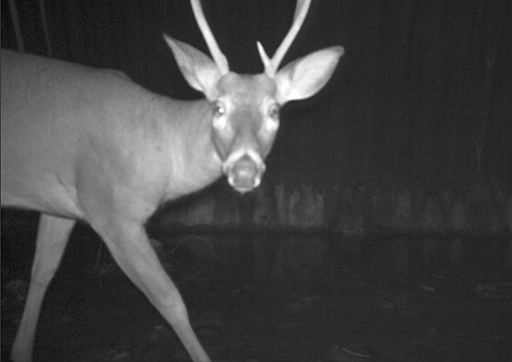
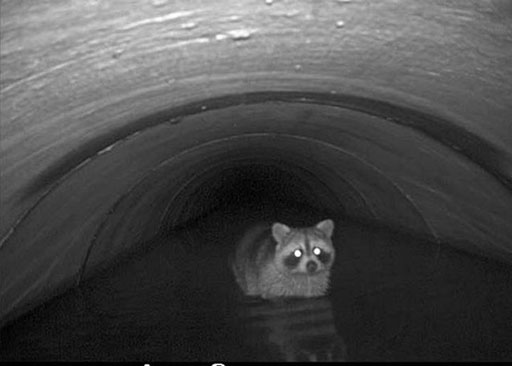
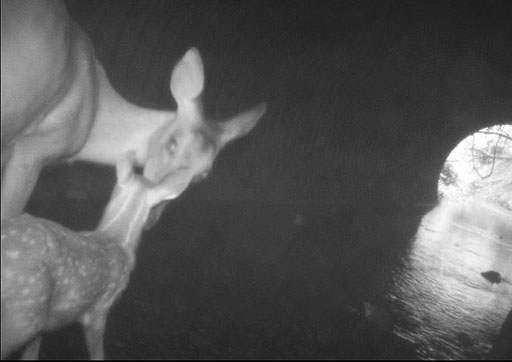
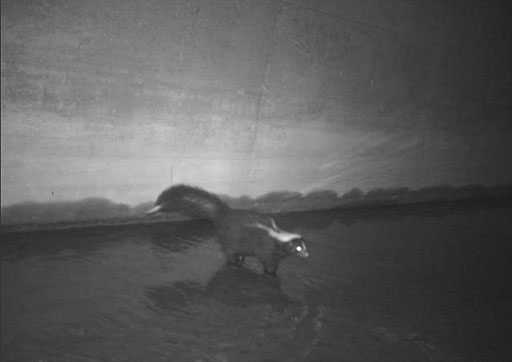
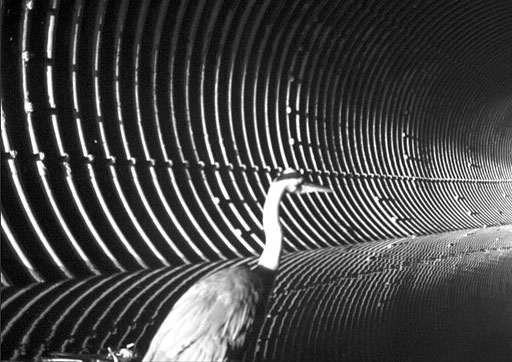
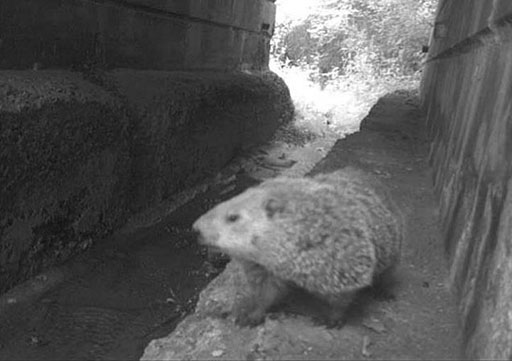
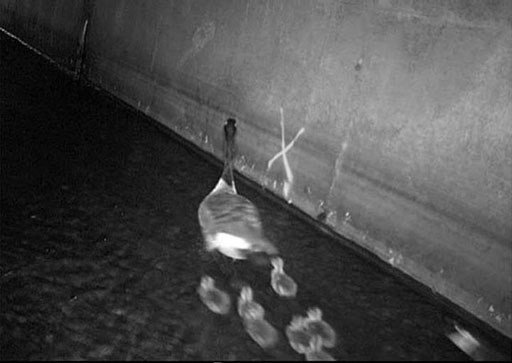







Kate Ryan, wtop.com
WASHINGTON – By now, you know why the chicken crossed the road.
However, scientists have tweaked the “Why did the chicken cross the road?” question to ask a new question. Given how congested our roads are, how did the chicken (and other animals) make it across without being flattened?
Ed Gates, a professor with the University of Maryland’s Center for Environmental Science, employed “crittercams” to help answer the question. He set the cameras in culverts, or storm drains, across the state to see what was going on, and what he found surprised him.
“It was amazing, the number of animals using these culverts,” Gates says.
It wasn’t just the number, but the variety that took him by surprise.
“Great blue herons, white tailed deer, turtles, and snakes,” he says.
The photos also told a story that made him think the animals were teaching each other about the safer shortcuts through traffic: adult animals were taking their babies through the storm drains.
“It just made sense to us that the animals were actually showing their young how to get across using this culvert,” he says.
Photos show geese trailed by their goslings, and deer, nuzzling their fawns as they moved through.
Gates counted 57 different species using the culverts.
Depending on the species, there were distinct preferences. Deer would steer clear of cobbled surfaces, anything that didn’t give a solid footing was out. Herons liked a sandy bottom and would snack along the way, poking below the water’s surface for crayfish. Squirrels wouldn’t even think of going underground.
Another form of wildlife cropped up on the critter cams: teenagers. Gates says he was surprised to see how many people would use the storm drains as short cuts, or as recreation. He caught people on tape biking, running and even kayaking through them when stormwater provided a watery route.
Gates does see a practical application. If animals really do adapt to them, additional storm drains could be installed along roadways to reduce vehicle-animal crashes.
See photos of the animals on the UMCES Facebook page.
Follow “>WTOP on Twitter.
(Copyright 2011 by WTOP. All rights reserved.)







